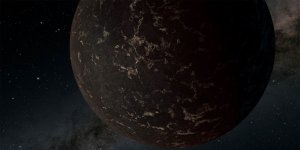| News / Space News |
Newly Discovered Comet Is Likely Interstellar Visitor
A newly discovered comet has excited the astronomical community this week because it appears to have originated from outside the solar system. The object - designated C/2019 Q4 (Borisov) - was discovered on Aug. 30, 2019.

This illustration depicts Comet C/2019 Q4's trajectory. Photo: NASA/JPL-Caltech
The new comet, C/2019 Q4, is still inbound toward the Sun, but it will remain farther than the orbit of Mars and will approach no closer to Earth than about 190 million miles (300 million kilometers).
After the initial detections of the comet, Scout system, which is located at NASA's Jet Propulsion Laboratory in Pasadena, California, automatically flagged the object as possibly being interstellar.
The comet is currently 260 million miles (420 million kilometers) from the Sun and will reach its closest point, or perihelion, on Dec. 8, 2019, at a distance of about 190 million miles (300 million kilometers).
The comet's current velocity is high, about 93,000 mph [150,000 kph], which is well above the typical velocities of objects orbiting the Sun at that distance. The high velocity indicates not only that the object likely originated from outside our solar system, but also that it will leave and head back to interstellar space.
Currently on an inbound trajectory, comet C/2019 Q4 is heading toward the inner solar system. On Oct. 26, it will pass through the ecliptic plane - the plane in which Earth and the other planets orbit the Sun - from above at roughly a 40-degree angle.
C/2019 Q4 was established as being cometary due to its fuzzy appearance, which indicates that the object has a central icy body that is producing a surrounding cloud of dust and particles as it approaches the Sun and heats up. Its location in the sky (as seen from Earth) places it near the Sun - an area of sky not usually scanned by the large ground-based asteroid surveys or NASA's asteroid-hunting NEOWISE spacecraft.
Observations completed at the University of Hawaii indicate the comet nucleus is somewhere between 1.2 and 10 miles (2 and 16 kilometers) in diameter. Astronomers will continue collect observations to further characterize the comet's physical properties (size, rotation, etc.) and also continue to better identify its trajectory. (NASA)
YOU MAY ALSO LIKE





